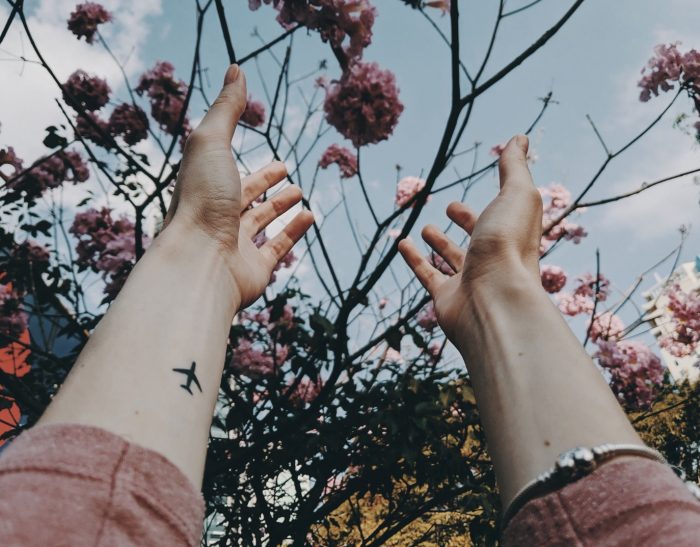I never visited the Japanese cherry blossoms—the flowers featured on Australian news broadcasts as spring arrives in the northern hemisphere.
On television, I notice how petals float lightly, probably brushing skin gently as fingertips. As they billow, people walk through them reflectively, as if slowed by the presence of these blossoms.
I’m used to noticing their brilliance during the brief news grabs of feel-good stories. But this year, they were featured in news bulletins because it was the earliest their blossoming had been recorded—and records go back over 1000 years. In some areas, they arrived 10 days earlier than average. Immediately, speculation started as to why.
Whilst I haven’t experienced the cherry blossoms, I’m familiar with floods.
Right down to the swirling sound of rising waters, the rotting smell left behind, and dampness absorbed into walls that turn into mildew when the humidity returns.
In the bends of my elbows remains the pain of futility as I swept sludge down a hallway, sluicing out silt into the front yard like the push of waters at low tide.
I’m also familiar with the smell of bushfires, an odour that once sent me panicked indoors, gathering a box of photographs, a cat, and a book of Bob Dylan lyrics.
Recently and within a year, Australia experienced both these extremes.
Whilst we continue debating how much these tragedies result from climate change, now that discussion extends into the onset of the Japanese blossoms. Are those early flowers a consequence of our warming planet? And are there myriads of other changes happening around us in their quiet, barely noticeable voices, pleading to us?
The loss of species. The collapse of glaciers. The surging of tides. The declining insect populations.
I’m not a scientist—I often wish I was. I love watching the evolution of ecosystems, noticing the poised concentration of a praying mantis, the circling of a dragonfly, and bees lifting from flowers.
But with these observations comes the feeling something is wrong. Dragonfly numbers diminished. Katydids, once plentiful, are now barely seen in my neighbourhood. The chirrup of a grasshopper is rarely heard. A rare native bee (called “blue-banded”) I once glimpsed through summers, now nowhere to be seen.
The numbers tell a confronting story:
>> 5.25 trillion pieces of plastic waste are estimated to be in our oceans.
>> Seas have risen two inches (over five centimeters) in the last 20 years.
>> The warmest years on record occurred since 2005, with 2016 and 2020 as the hottest—one billion people are expected to live in insufferable heat within 50 years.
>> Nearly 25 million acres (10 million hectares) of forest cleared each year since 2015.
Our planet is swamped by bursting landfills, run-offs from fertiliser, dumped toxic chemicals, and the proliferation of invasive species of vegetation, insects, and feral animals.
If every person on this planet consumed the way my community does, we would need 10 planet Earths to sustain us.
There is a view we are merely experiencing a natural phase. The planet warmed, ending the ice age around 10,000 years ago. Climate change on that occasion was gradual. The earth had time to adjust to the changes—but our situation now is different.
Global warming is driven mainly by carbon dioxide from humans burning fossil fuels. The ability of our planet to absorb rising levels of greenhouse gases is diminishing—unable to keep up with the increasing levels. Unless emissions are significantly reduced, levels of carbon dioxide and therefore global temperatures will continue rapidly increasing.
I’m not sure our planet can recover from this.
Its weather patterns will likely become more violent in response to these problems. As if activating an immune system, not unlike the one in our bodies when we attempt to fight off illness. Most of us know the muscle pain, raised temperature, and sometimes delirium accompanying fighting off influenza. Perhaps extremes of weather are efforts by the planet to fight off infection—except we are the bacteria.
What are our choices?
Yes, we can sit up marvelling at David Attenborough documentaries. But do we care enough to change our habits? Are we prepared to stop buying products with excess packaging? Find alternatives to products that defile the environment: palm sugar, disposable coffee cups, single-use razors, disposable cutlery, and most products from the rainforests. It would take a book rather than an article to list everything.
Can more of us find a purpose and connection in life that goes beyond consuming?
A few Saturdays ago, I sat outside in the hazy light we experience at this time of year, feeling it weighing lightly on my arms. A cloudbank lay across the sky, a line marking the border between the fading fall and approaching winter.
Again, I picture those descending Japanese cherry blossoms.
Between now and the day those blossoms next open, there’ll be other seasons and with them the transit of birds, the passage of whales, growth of new leaves, and the emergence of insects. Along with those will be the questions:
Are numbers the same? Behaviors? And if we can’t care for the creatures we share the planet with, how can we possibly care for ourselves?
And until the next blossoms, we watch and wonder—but will we act?
~









Read 9 comments and reply